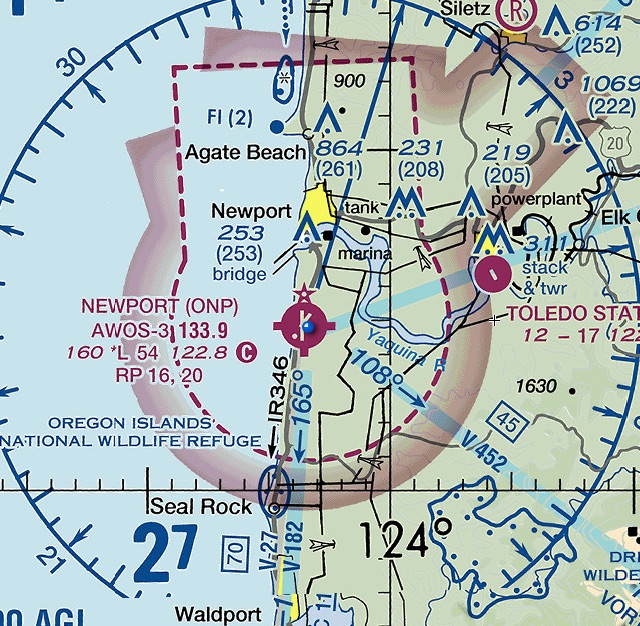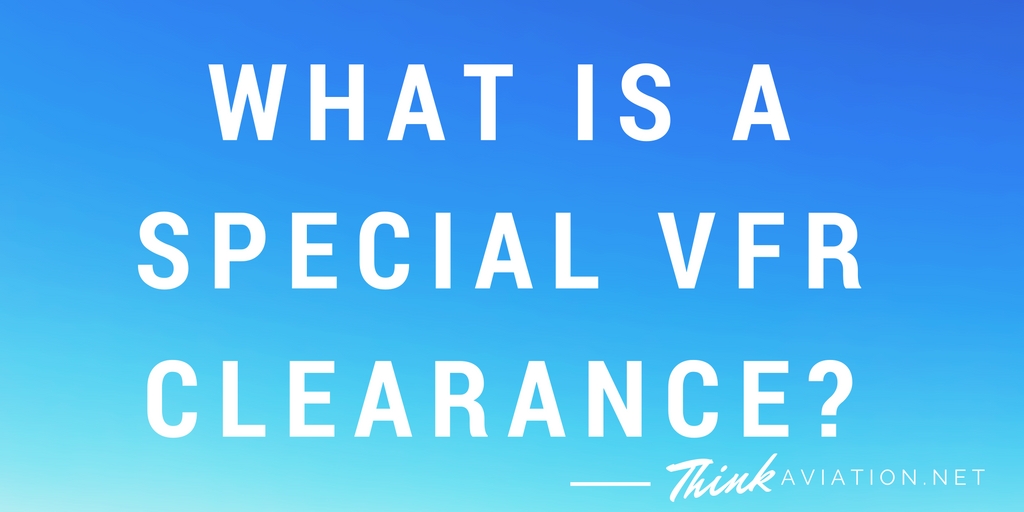
What is a Special VFR clearance?
Special VFR clearances allow VFR pilots to land at surface E, class D, and some C and B airports when the field is IFR, but only if:
- the pilot can stay clear of clouds
- the visibility is at least 1 statute mile (SM)
- from sunrise to sunset
So, that’s the official definition, but it’s more complicated than that.
There are some exceptions to the above statement. Keep reading for a more in-depth look on when and how to use Special VFR.
Why should you ask for a Special VFR clearance?
The Special VFR clearance exists to help VFR pilots/aircraft get in and out of controlled airfields when the field is IFR without an IFR clearance/flight plan.
It’s not an IFR clearance, so if your aircraft is a VFR-only aircraft, you can use a special VFR clearance.
Pilots cannot use Special VFR clearance at night.
Note: airfields are considered IFR when the clouds are less than 1000′ and/or the visibility is less than 3 statute miles anywhere within 5 nautical miles from the airport. You will also know a field is IFR because the rotating beacon will come on during the day.
It’s important to remember the 5 NM bubble around the airport. Sometimes half the airfield is fogged in and the other half is perfectly fine. This is where a Special VFR clearance is extremely useful.
Teaching tangent: If a pilot reports low ceilings to the tower when they are a couple of miles from the airport, the tower will probably make the field IFR even if the current conditions over the runway are above 1000′ AGL.
So, if the tower asks you for a condition report when you fly in or out, you could make the field IFR if you report ceilings lower than 1000 feet.
Think carefully about the report you make. Don’t lie, just understand the consequences of what you report. Make sure you are very accurate.
What are the basic requirements for Special VFR?
Before you ask for a clearance you need to know the basics.
First, the visibility must be at least 1 statute mile for airplanes and less for helicopters.
So, if the METAR says 1/2 mile visibility, you will need to file an IFR flight plan or stay at home as a VFR pilot.
Once you take off you have to remain clear of clouds and the visibility must be 1 statute miles.
Remember, though, if you end up staying in Class E airspace outside of the airport’s airspace (Class E starts at 700′ or 1200′ AGL), you have to maintain VFR cloud clearances (500′ below, 1000′ above and 2000′ horizontal).
How do you request Special VFR?
It depends.
- Does the airport have a Tower and is the Tower open? Call the Tower or call Center if it’s closed.
- Is the airport in Class G airspace? There is no requirement for a Special VFR clearance in Class G.
Remember, pilots, not ATC, must request Special VFR.
If the field is IFR, and you ask to taxi for takeoff on a VFR flight plan, Tower will come back and say: “State your intentions.”
Don’t take this as a rejection. ATC is required to ask you what you want to do. They can’t give you Special VFR clearance without you first requesting it.
That’s their way of prompting you to ask for Special VFR. They know you want it. They’re helping you out.
If you’re flying to an airport during the day with an open tower, you will make a normal tower call around 10 NM out and then add “request special VFR,” into the radio call.
Here’s where it gets tricky, though. What if the tower is closed or you are flying to a surface E airport with no tower?
This happens occasionally. Check out this picture of Newport, Oregon below.

In this case, you will need to call Center or Approach and request Special VFR clearance. Surface Class E airspace is “controlled” airspace.
You can’t just give yourself a Special VFR clearance and waltz into surface Class E when the clouds are less than 1000′ AGL.
Here’s the catch, though. You are a super low priority. If there is any IFR traffic trying to get into Newport, OR you are out of luck until they land and cancel their IFR flight plan.
It’s important to understand that you cannot enter surface E airspace when the ceilings are less than 1000′ without a Special VFR clearance from Center.
Here’s another tricky thing: some Class D airspace reverts to surface E airspace when the tower closes. You will usually hear this note on the ATIS.
It will say something to the effect of “Salem Class D airspace reverts to Surface E airspace.”
They do this on purpose. They don’t want some scud-running pilot to bust into the airspace and land when the weather is below 1000′ AGL.
The IFR traffic won’t have a chance to pick up the traffic when they come out of the clouds to land. This is a mid-air waiting to happen.
The surface class E forces VFR pilots to call Center. Now Center can keep track of this random low-level VFR aircraft. They can de-conflict traffic.
When should you request Special VFR?
The short answer? Hardly ever if you are an airplane pilot. Helicopter pilots will use it more often.
Bottom line: only request it when you know the weather is significantly better away from the airport. Only consider it when you are flying from or to an area of excellent weather.
Here are some specific examples of appropriate times to consider Special VFR (helicopter pilots have way more leeway):
- Half the airport is fogged in, but not the runway you are using.
- There are lower clouds within 5 NM of your airport causing the airport to be IFR, but they aren’t in your direction of travel. You are confident you can take off and stay well away from any clouds. You can even see clear skies in your direction of flight.
- There is a marine layer causing the airport to be IFR, but the ground visibility is awesome and you can see the start and end of the marine layer.
Do you see the general theme? The intent is to get you into or out of an airport that has some weird cloud deck but where the weather is awesome close by.
Only use Special VFR when flying to or from an area of good weather.
Special VFR is not for scud running! Remember, you have to maintain cloud clearance once you leave the airport’s airspace.
Just because you got out doesn’t relieve you of your obligations in Class E of staying 500′ below the clouds.
Flying in low clouds is no joke. If you haven’t flown in low ceilings/visibility, grab your flight instructor on a day when the ceilings are 1500′ and visibility is 2 miles. Have an instrument backup plan. It’s kind of scary.
For helicopter pilots, you will use Special VFR a lot. While I never recommend scud running, they can get away with it because they can land if they can’t maintain cloud clearance.
What are the restrictions on Special VFR clearances?
Here are some pretty restrictions:
- You have to be an instrument pilot in an instrument-equipped aircraft to fly Special VFR at night.
It makes sense. The chances of punching in when flying in less than 1000-3 is pretty high at night.
I wouldn’t fly a Special VFR clearance at night unless I was in a helicopter with Night Vision Goggles or I was crazy.
- You have to maintain 1 statute miles or 1-mile flight visibility at all times once you receive the clearance.
If there is a weather reporting station you can’t use the flight visibility rule, you have to go by reported visibility.
But, there’s a catch. Some airports have one-minute weather which Center may not have access to, so if the visibility looks good, let Center know you have flight visibility of at least a mile.
It’s your responsibility to listen to the one-minute automated weather and determine if you have 1 SM.
If visibility drops below 1 mile you either need to
- get an IFR clearance B)
- If you aren’t IFR rated in an IFR aircraft then you must declare an emergency. Chances are you made some bad pre-mission planning and you need to land ASAP.
- You need to get out of the airspace. Your clearance is no longer valid.
I hope that clears up Special VFR. Use it with caution. Don’t be an idiot and fly around when the ceilings are less than 1000′ unless you can get to a clear area soon.
Additional Reading:
FAA’s web page on Special VFR (great article with examples)
Practical exercise on SVFR from Bold Method website
The official FAA regulation on SVFR
Hey! One more thing! Did you like this article?
You can get additional aviation tips, tricks, and resources not found on my blog. You can only get them by subscribing.
Sign up below!
Discover more from reviewer4you.com
Subscribe to get the latest posts to your email.





